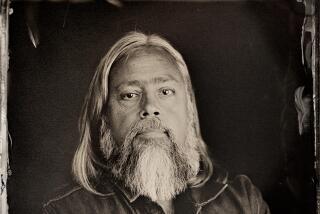Handprint Became Her Signature
- Share via
Question: I have a number of North American Indian baskets. Some, I believe, date back to the previous century. Is there any one Indian basket maker sought after by collectors more than others?--B.T.
Answer: Given the great number of fine Indian artists, particularly in the Southwest, there understandably have been a plethora of outstanding basket makers whose works have been catalogued and sought by collectors.
Still, there is an author who doesn’t mind going out on a limb.
“The most famous North American basket maker was Dat So La Lee (or Mrs. Louisa Kayser), who lived from about 1850 to 1924,” according to Dawn E. Reno, who wrote “American Indian Collectibles” (first edition, 1989, The House of Collectibles and Ballantine Books, $12.95, 394 pages, dealer and auctioneer listings, bibliography, index).
Reno writes that Dat So La Lee “was born into the Washo tribe that lived around Lake Tahoe and it was there that she learned to make baskets with her people.”
Ultimately, Reno writes, she fell on hard times and it wasn’t until she was 60 when a Carson City, Nev., emporium owner, Abe Cohn, recognized her talent. Cohn then provided her and her husband with a home, food and clothing and paid off her family’s medical bills in exchange for her baskets.
“Dat So La Lee’s weaving was tight and even, and her baskets are classics,” Reno writes. “Her triangular and flame-shaped motifs are perfectly spaced to the field on which they are placed. Some of her baskets have symbols on them that represent sunrise or the midday ascending heat waves.
“Though she could not sign her name, she used a handprint as her signature.”
For his part, Cohn catalogued her work, listing, numbering and titling her baskets. As a result, when they were displayed at the 1919 St. Louis Exposition, Reno writes: “She was one of its stars.”
As we have mentioned with other collectibles--particularly in the case of higher priced items such as Indian baskets--it’s of great importance to document the artist.
On this point, author Reno points out, Indian basket makers generally do not sign their work, so it is up to the purchaser to authenticate the artist through other means.
In the case of Dat So La Lee, the handprint is the key.
Mailbag
E.H.C. of Palos Verdes Estates has a collection of post cards displaying photos of the 1933 Century of Progress exhibition in Chicago and wants to know if any collectors are interested in them.
J.A.B. of Alta Loma has a doll given to her by her aunt in 1917. Information on the doll reads “Coleman Walking Doll, Babs, Patented in U.S.A.” She wants information on its value.
R.S. of Lakewood says he has two samurai swords worn by Japanese army and navy officers during World War II. He wants to know what they’re worth.
J.P. of Victorille has a number of cigar bands that she says are in good condition, and that she collected in the 1920’s and 1930’s. She is searching for a purchaser.
Soble cannot answer mail personally but will respond in this column to questions of general interest about collectibles. Do not telephone. Write to Your Collectibles, You section, The Times, Times Mirror Square, Los Angeles 90053.


